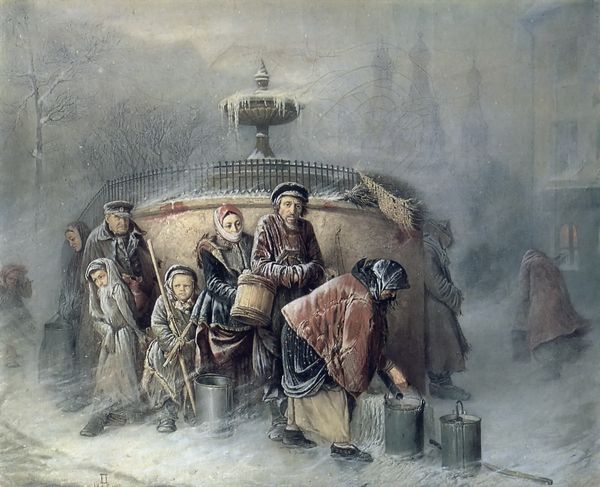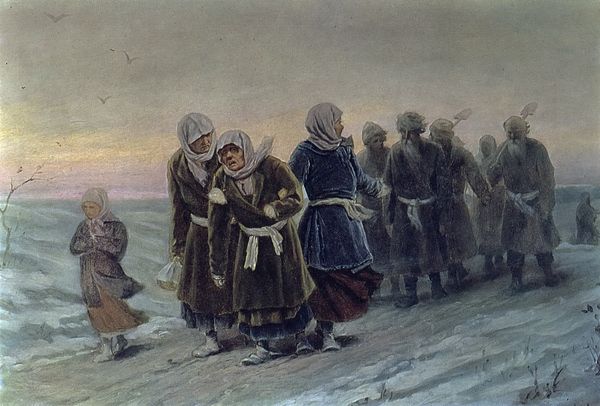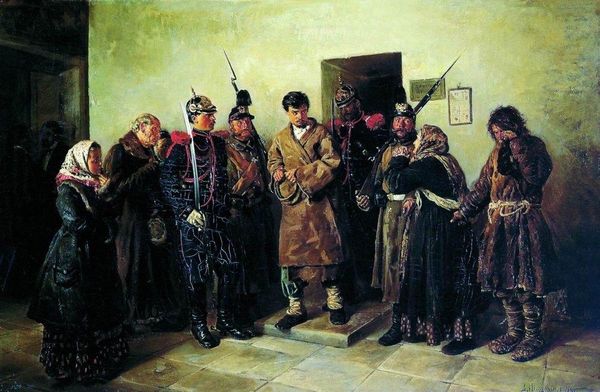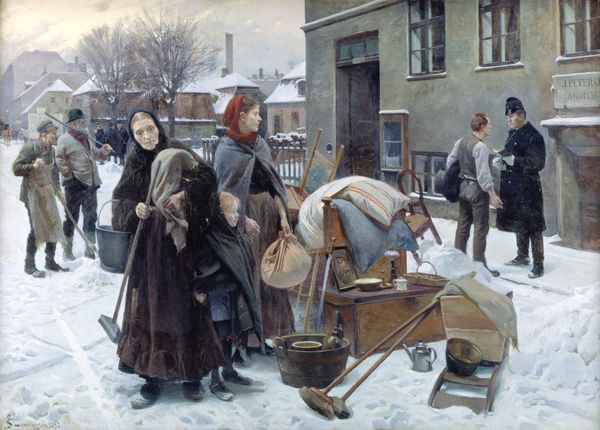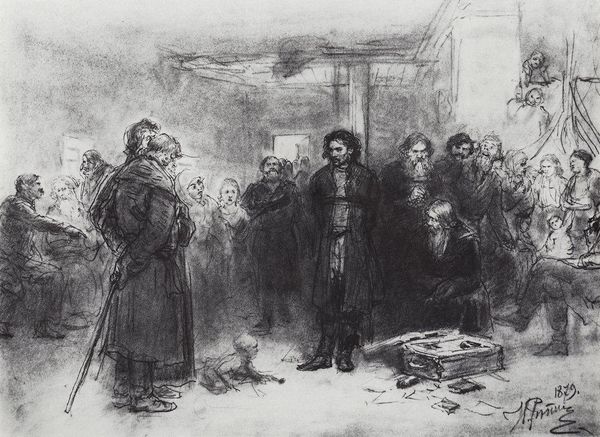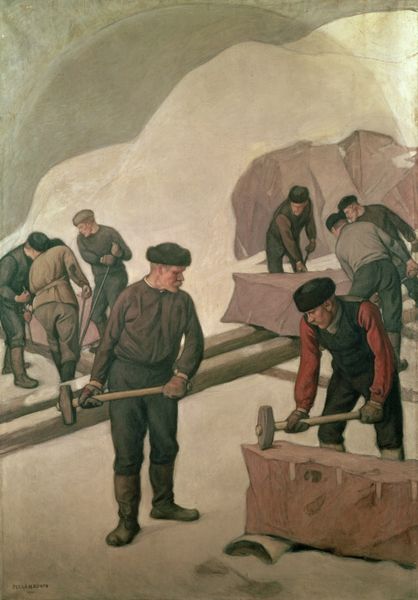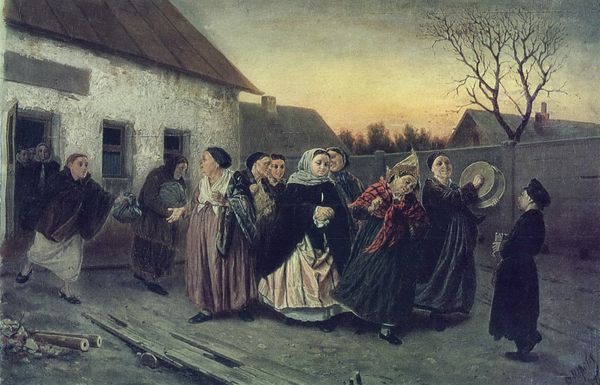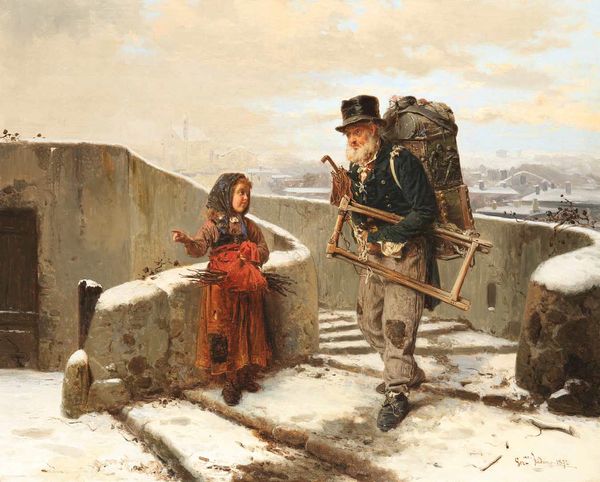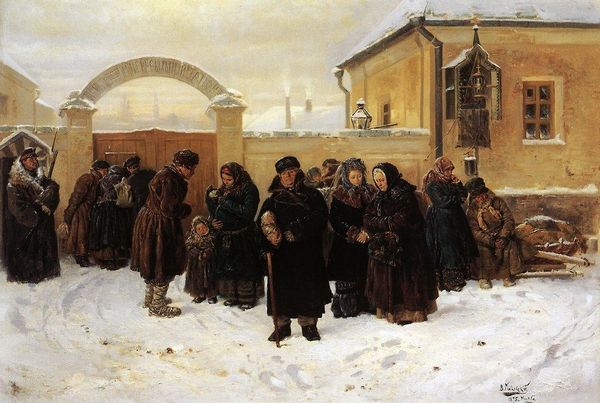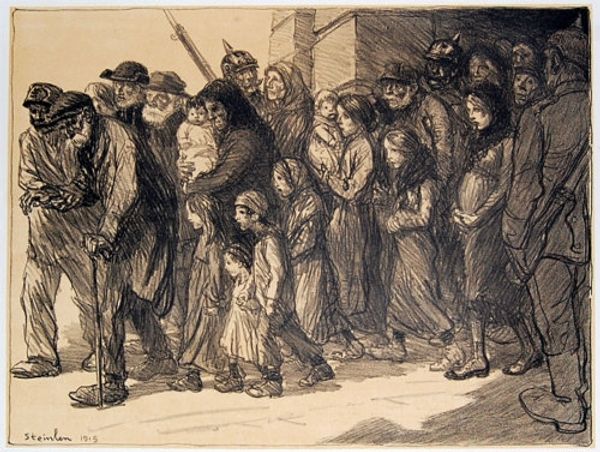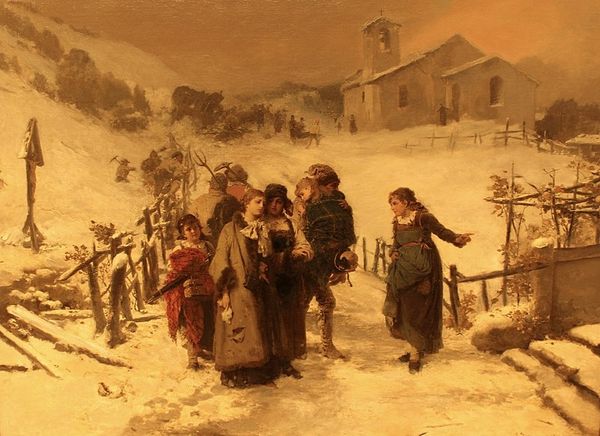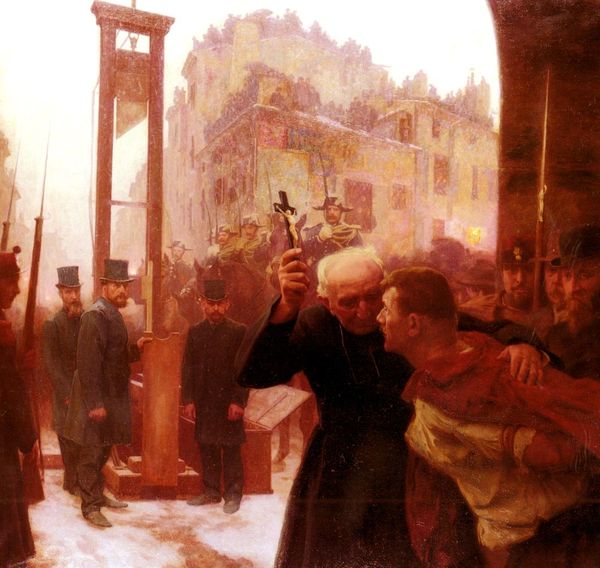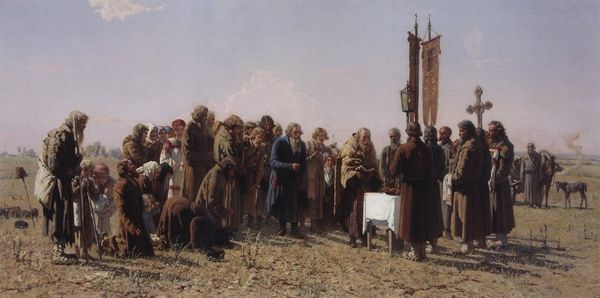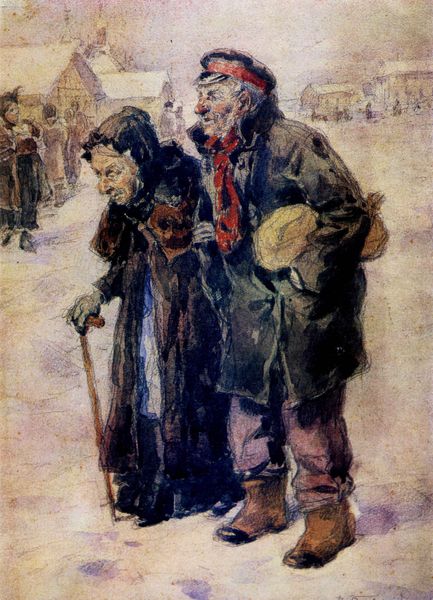
Dimensions: 52 x 66 cm
Copyright: Public domain
Curator: This is Vasily Perov’s 1868 painting, “On the Railroad.” An oil on canvas. Editor: It's so stark, visually and emotionally. The palette is dominated by browns and greys; it makes the whole scene feel muted and somber. Curator: The somberness likely comes from Perov’s realist depiction of peasant life after the emancipation reform of 1861. Notice the ragged clothing and worn expressions. This work highlights the social tensions following the reforms; the railroad construction, while a symbol of progress, exploited peasant labor. Editor: Absolutely. The composition reinforces that. The way Perov groups the figures, dividing them between near and far sides of the tracks, amplifies the painting’s symbolic load. And the faces, the details of each character is very potent; the expressions range from disbelief to resignation. It really pulls the eye. Curator: Observe how Perov employs a naturalistic style. The figures are painted with detailed accuracy; even the barren winter landscape is faithfully rendered, free from romantic idealizations. He has also composed them along the horizontal axis of the railroad, making the painting accessible and narrative-driven for contemporary viewers. Editor: Though seemingly straightforward in its approach, Perov complicates this tableau by positioning us, the viewers, outside the fence, implicating us in this scene. The bleak winter setting contributes significantly to the overarching theme of hardship and disenfranchisement. The very texture of the oil paints seems to emphasize the bleakness. Curator: Indeed, “On the Railroad” served as a poignant critique of the human cost of industrial progress. Its accessible style amplified Perov's sociopolitical critique, catalyzing discussion about the peasant conditions and sparking crucial conversations around the Russian Empire's direction during this formative time. Editor: It definitely leaves a lasting impression and forces you to consider the untold stories behind seemingly impersonal advancements. There’s power in that—a lasting resonance that keeps the painting relevant even today.
Comments
No comments
Be the first to comment and join the conversation on the ultimate creative platform.
